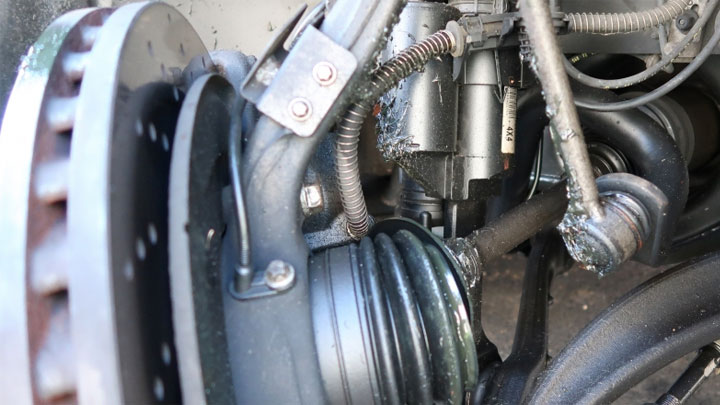4 Symptoms of a Bad Wheel Speed Sensor
Wheel speed sensors in particular are very reliable, but they can fail depending on where they are installed.
What is a wheel speed sensor? Whether you call it a wheel speed sensor (WSS) or an ABS sensor, this electrical device provides feedback on the speed of the vehicle’s individual wheels. These sensors should not be confused with the vehicle’s transmission speed sensor, which serves an entirely different purpose.
The more pulses produced in a given time frame, the faster the wheel is registered as rotating.
Wheel speed sensors come in two separate configurations:
1. The first is a passive sensor. It is analog and does not require a reference voltage to operate.
2. The second configuration of wheel speed sensors is an active design. These sensors require an input voltage to operate and use a tone ring like an encoder. Most newer vehicles use the last of these two sensors for reliability.
The vehicle’s control software uses the feedback from one speed sensor and compares it to the feedback from all the other wheel speed sensors on the same vehicle.
This allows the software to determine if one of the vehicle’s wheels is spinning faster than the others, indicating a possible skid or brake lockup.
Where are they located?
The wheel speed sensors are mounted on each of the vehicle’s four wheel hubs. Identifying these symptoms early is crucial if it expedites repair of the problem at hand.
Below are some of the most common symptoms associated with a faulty wheel speed sensor:
1) ABS Light (or Stability Control Light) Illuminated
In most cases, the ABS warning light will illuminate when the vehicle’s control software detects a faulty wheel speed sensor (ABS sensor). This is the result of a stored ABS-related fault.
2) Poor functioning of active safety systems
Your vehicle’s anti-lock braking system, stability control, and traction control all rely on feedback from the vehicle’s individual wheel speed sensors. In most cases, these systems will lock up if a wheel speed sensor failure is detected.
3) Brake pedal pulsation
In rare cases, your vehicle’s brake pedal may pulsate vigorously while driving, as if ABS-regulated braking is being applied. As we’ve already mentioned, this is a fairly rare symptom and is more likely to occur in older cars than newer vintage cars.
4) Longer stopping distances
You may also notice that it takes longer to stop your vehicle, especially during emergency or panic braking, if one or more wheel speed sensors have failed. This is primarily due to the lack of ABS functionality due to the auto-lock mentioned above.
What causes wheel speed sensors to fail?Wheel speed sensors can fail for a variety of reasons, some of which are more common than others. For example, the sensor can be irreparably damaged by dirt impacts caused by hitting a solid object on the road.

